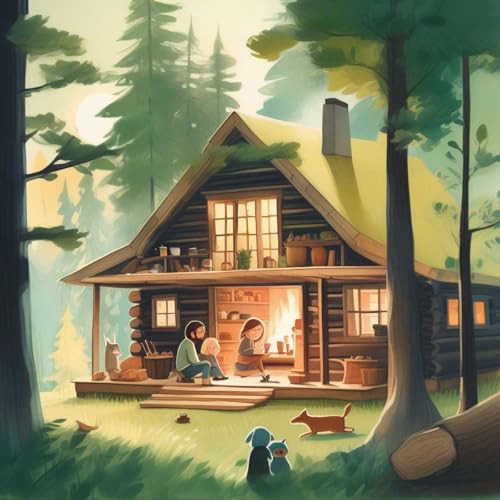
Audio Summary of Little House in the Big Woods: A Journey Through Pioneer Life
Failed to add items
Sorry, we are unable to add the item because your shopping cart is already at capacity.
Add to basket failed.
Please try again later
Add to Wish List failed.
Please try again later
Remove from Wish List failed.
Please try again later
Follow podcast failed
Unfollow podcast failed
-
Narrated by:
-
By:
About this listen
"Little House in the Big Woods" by Laura Ingalls Wilder captures the experiences of the Ingalls family living in a rural Wisconsin community during the late 19th century. The book, narrated through the eyes of young Laura, highlights themes of family, community, and self-sufficiency as it details their daily life, seasonal activities, and the challenges they face in a natural wilderness. Through vivid descriptions of homesteading, food preparation, and celebrations, Wilder emphasizes the importance of family bonds, the skills necessary for survival, and the beauty of the natural world, conveying a nostalgic and warm portrayal of pioneer life.
2 Key Concepts of Little House in the Big Woods
In Chapter 1 of "Little House in the Big Woods," the theme of family and the bonds created through shared experiences and daily life is established. Subsequent chapters such as Chapter 2, where the family's interactions during winter and their routines are detailed, and Chapter 5, which illustrates the family's celebration of Christmas and their traditions, further emphasize this theme. Additionally, Chapter 7, where Laura describes the importance of familial roles during hunting season, showcases the collective efforts and teamwork of the family, reinforcing the significance of unity and cooperation in their lives.
3 In-Depth Chapter Analysis of Little House in the Big Woods by Laura Ingalls Wilder
In the first chapters of "Little House in the Big Woods," notably chapters 1 and 2, the theme of family and self-sufficiency is prominently showcased. Chapter 1 introduces us to the Ingalls family and their life in the Wisconsin woods, emphasizing the bond between family members and their intimate connection with nature. For instance, the description of their home—a log cabin—illustrates their resourcefulness and ability to thrive in a challenging environment. The family works together, sharing duties like gathering food and maintaining the home, which reinforces the idea that survival in the wilderness requires cooperation and unity among family members.
As we progress to chapter 5, the theme of childhood curiosity and the joy of simple pleasures is highlighted through Laura’s experiences and observations of her surroundings. In this chapter, Laura describes the excitement of the changing seasons, including the preparations for winter and the rituals of making maple syrup. This not only reflects the Ingalls' self-sufficient lifestyle but also captures the innocence and wonder of childhood. Laura’s delight in these activities serves to connect the narratives of home life and nature, illustrating how family traditions and the beauty of the natural world contribute to the children's formative experiences.
1.Listen Little House in the Big Woods Audiobook summary at Bookey
2.Buy Little House in the Big Woods at Amazon
3.Buy Little House in the Big Woods at Kobo
4.Search Little House in the Big Woods at worldcat
No reviews yet
In the spirit of reconciliation, Audible acknowledges the Traditional Custodians of country throughout Australia and their connections to land, sea and community. We pay our respect to their elders past and present and extend that respect to all Aboriginal and Torres Strait Islander peoples today.



